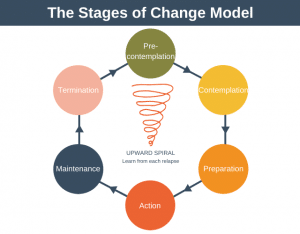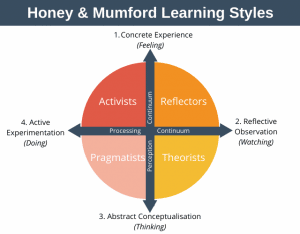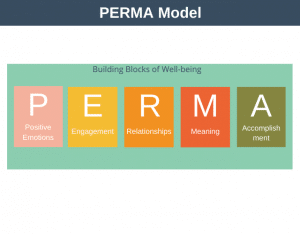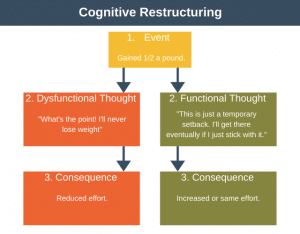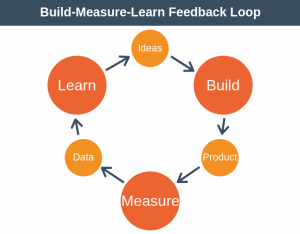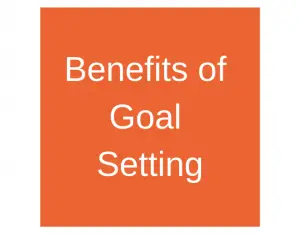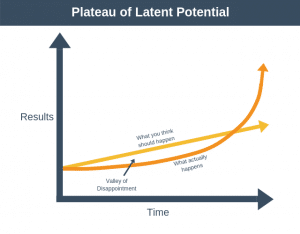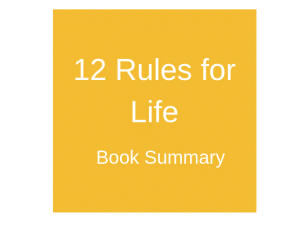The Positive And Negative Affect Schedule (PANAS scale) is a self-assessment questionnaire for measuring your emotions and feelings.
The workplace can be an exciting yet at the same time challenging place. You can feel energized and proactive but also feel angry and upset at the same time. Whether you experience positive feelings, negative feelings, or a mixture of both, this will affect your performance in the workplace. To increase your workplace enjoyment, it’s better if you can experience more positive emotions than negative ones.
The PANAS scale is broken into two sections to measure both your positive affect and negative affect. Positive affect refers to your tendency to experience positive emotions, and the higher your positive affect the more prevalent these emotions are. Negative affect is the opposite and refers to the level of negative emotions you might be experiencing.
It should come as no surprise that people whose positive affect outweighs their negative affect are more positive and resilient, and are better able to handle challenging circumstances in a mostly positive way.

People with a higher negative affect are more likely to exhibit frequent bad moods, seem anxious, and be less likely to help out. In the context of the workplace, it can be more challenging to work with colleagues who have a high negative affect. A team that has an overall positive affect is likely to be more cooperative and engage in constructive problem solving, not to mention being a nicer place to work.
Let’s take a closer look at using the PANAS scale.
Background
The PANAS Scale was developed by three American psychologists: David Watson, Lee Anna Clark, and Auke Tellegen, in 1988 to improve upon earlier approaches of measuring mood that had questionable results and reliability.
PANAS is primarily used as a research tool in group studies and clinical situations.
There are several different versions of the PANAS scale in existence that have been build upon the original model that you should be aware of:
- PANAS-C: designed to measure the mood of school-aged children.
- PANAS-SF: a short-form and more concise version of the original model.
- I-PANAS-SF: a short-form version designed for international use, whereby the words used have less room for ambiguity.
- PANAS-X: an expanded version of the original made up of 60 words. Despite containing 60 words, the assessment can still be undertaken in less than 10 minutes.
An alternative model to PANAS is called the PERMA model of well-being, which focuses on strengthening the building blocks of your well-being over time.
What is the PANAS Scale?
The PANAS scale consists of two lists of 10 words; one list describes positive emotions and the other negative emotions. The scale works simply by rating each stated emotion using a 5-point scale.
PANAS recognizes that you can feel both positive and negative emotions at the same time. Imagine feeling elated the moment your team has won a new project; only the next moment to feel disappointed when your colleague is assigned to lead it.
A high positive affectivity score indicates positive feelings that lead to being proactive and enthusiastic. A low positive affect score represents lethargy and sadness. A high negative affectivity score highlights negative emotions that lead to a state of distress or being disengaged. A low negative affect score reflects a state of being calm.
The main reasons you might choose to use the PANAS model are:
- You want to assess your own emotional state over time.
- You want to assess a group’s emotional state changes over time.
- You want to assess another individual’s emotional state over time.
How to use the PANAS Scale
Let’s look at how you might go about using PANAS in practice. The questionnaire should take you no more than 2 to 3 minutes to complete.
As you can see below, the first 10 items on the questionnaire refer to positive emotions, and the remaining 10 items on the questionnaire refer to negative ones. You complete the questionnaire by scoring how you feel for each emotion, so for example, if you generally felt “quite a bit” enthusiastic you would score yourself a 4 for that item.
| Very slightly/ Not at all | A little | Moderately | Quite a bit | Extremely | |
|---|---|---|---|---|---|
| Interested | 1 | 2 | 3 | 4 | 5 |
| Alert | 1 | 2 | 3 | 4 | 5 |
| Attentive | 1 | 2 | 3 | 4 | 5 |
| Excited | 1 | 2 | 3 | 4 | 5 |
| Enthusiastic | 1 | 2 | 3 | 4 | 5 |
| Inspired | 1 | 2 | 3 | 4 | 5 |
| Proud | 1 | 2 | 3 | 4 | 5 |
| Determined | 1 | 2 | 3 | 4 | 5 |
| Strong | 1 | 2 | 3 | 4 | 5 |
| Active | 1 | 2 | 3 | 4 | 5 |
| Upset | 1 | 2 | 3 | 4 | 5 |
| Distressed | 1 | 2 | 3 | 4 | 5 |
| Nervous | 1 | 2 | 3 | 4 | 5 |
| Jittery | 1 | 2 | 3 | 4 | 5 |
| Guilty | 1 | 2 | 3 | 4 | 5 |
| Ashamed | 1 | 2 | 3 | 4 | 5 |
| Hostile | 1 | 2 | 3 | 4 | 5 |
| Irritable | 1 | 2 | 3 | 4 | 5 |
| Scared | 1 | 2 | 3 | 4 | 5 |
| Afraid | 1 | 2 | 3 | 4 | 5 |
Once you have completed the questionnaire, to score yourself, simply add your individual scores together for the first 10 items (your score will range between 10 and 50). The higher your score the higher your positive affect. Next, score yourself for the next 10 items (again, your score will range between 10 and 50). This time, the higher your score the higher your negative affect.
If you’re intending on using the PANAS scale over a period of time, here is a very simple four-step process you can use, that ensures you’re measuring things consistently over time.
Step 1 – Select a Time Interval
The first step in this process is to be deliberate about how frequently you are going to take the test. This could be weekly, monthly, or annually – whatever you think is most appropriate to your situation. This step is important because if you don’t perform the assessment more than once then you won’t be able to tell how your moods are changing over time.
Step 2 – Select a Moment
In this step we want to get precise about the specific moment we are measuring, that way, we can measure the same moment from assessment to assessment. You might choose to measure one of these specific moments:
- Now: the way you feel at this very moment.
- Today: the way you have felt generally today.
- Past few days: the was you have felt generally over the past few days.
- In general: the way you generally feel.
- Extended periods: here you can set the period to be whatever you like, for example, last month or last year.
Step 3 – Complete the Assessment
Complete your PANAS questionnaire, scoring yourself from 1 to 5 for each item with a score of 1 meaning you don’t experience or only very slightly experience that feeling and 5 meaning you experience that feeling intensely.
Step 4 – Calculate and Compare
Add up your total positive score and your total negative score. This will leave you with two numbers, one for positive affect and one for negative.
You will be able to see immediately whether your positive affect is higher than your negative number, this will tell you whether you deal with the problems life throws at you in a more positive way (your positive affect is higher) or a more negative way (your negative affect is higher).
The real power of the model comes from tracking your numbers over time. You do this to ensure that your trends are going in the right direction over time, and if not, to take corrective action immediately. Often, PANAS enables you to identify the direction of travel of your moods early so you can take corrective action before they become more serious.
PANAS Scale Example
Imagine you are a new office manager and that you want to know how your new team is feeling while they work on a multi-year project. You ask each team member to participate in doing the PANAS questionnaire. For the purpose of this example, you decide to:
- Ask each participant to indicate to what extent they feel about each word in the present moment and score them using the discrete scale.
- Collate the results.
- Repeat the two steps above each and every month.
If you took two snapshots in time three months apart, you might see one of several results.
- The scores are the same, and your team is operating as before.
- Negativity increases, so you want to understand why. You could discover the change in emotional affect is across the whole team, or just for a single individual. What you uncover will determine the course of action you take.
- Positivity increases, so you’ve got nothing to worry about.
For this example, we discover that negativity is increasing.
We find that a single person is dragging down the overall team score. Upon discussing the trend with the individual we discover this is caused by a change in the day-to-day tasks they perform which they don’t find as enjoyable. You work with them to find a compromise solution. This addresses the deteriorating trend but also stops the issue from becoming an even bigger problem.
Advantages and Disadvantages
Advantages
The benefits of using the PANAS scale include:
- The questionnaire is both easy to understand and easy to use. You can quickly understand your overall mood in a matter of minutes.
- It can be used to track mood changes over time. This can help you proactively find and understand issues impacting your mood early before they go on to become more serious problems.
Disadvantages
Some of the limitations of the PANAS scale include:
- The questionnaire is a subjective self-reported measure, so the accuracy depends on your own self-awareness.
- Your results may vary from day to day or even hour to hour depending on your mood at the moment you complete the questionnaire. If you’re feeling low when you complete PANAS you’ll tend to overstate the negative, and if you’re feeling great you’ll tend to overstate the positive.
Summary
The Positive and Negative Affect Schedule (PANAS) is a 20-item self-reported measure of positive and negative affect developed in 1998 by three American psychologists.
Each item is rated on a 5-point scale and the positive and negative items are separately tallied to provide an overall picture of your mood.
Generating awareness of your mood can lead to insights into your behavior. With increased awareness, you can correct negative trends before they become serious. People with a more positive mood are generally able to handle the challenges that life throws at them in a more positive way.
